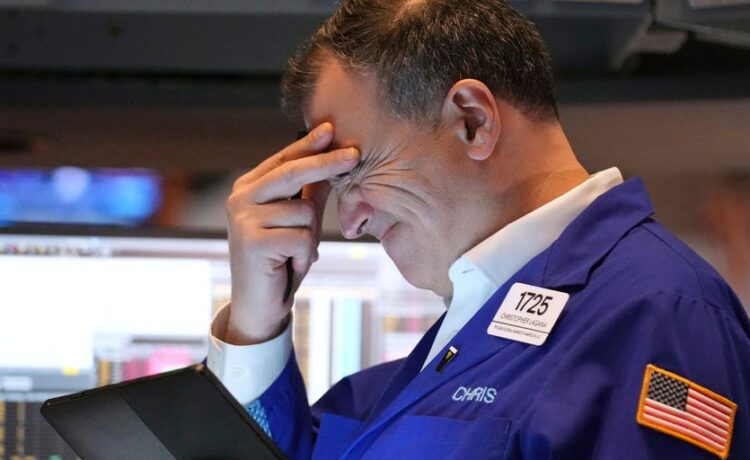The US lost its last remaining top-tier credit rating on Friday, and investors responded on Monday by reviving the “sell America” trade.
Everything from bonds to stocks to the US dollar ticked lower to start the week, with markets assessing the impact of Moody’s decision to downgrade the US debt rating from Aaaa to Aa1.
The yield on the 30-year Treasury bond was up as much as 12 basis points to 5.02%, the highest level since late 2023.
The 10-year yield also rose about 10 basis points to surpass 4.5%. Bond yields rise when prices decline.
“If we stay at these levels this would be a higher yield than that seen at the worst close after Liberation Day,” Jim Reid, managing director and head of global macro and thematic research at Deutsche Bank, said in a note on Monday.
The previous triple-A rating signifies top-tier creditworthiness, with the US at minimal risk of not being able to meet its obligations to debt investors. Other countries with the top rating include the European Union, Canada, and Germany.
Aa1 is the second-highest rating and still indicates a very low credit risk of a borrower.
The ratings agency’s decision highlights a growing concern in the bond market. Market pros tell Business Insider that any fiscal package that adds substantially to the deficit could be met with protest from “bond vigilantes” and send yields spiking to painful levels.
“The combination of diminished appetite to buy US assets and the rigidity of a US fiscal process that locks in very high deficits is what is making the market very nervous,” George Saravelos, Deutsche Bank’s head of FX research, said in a note on Monday.
He added that a key problem for the US was bond and currency markets failing to properly price in fiscal risks.
Here’s how other assets were moving on Monday.
US stocks
The S&P 500 and the Nasdaq 100 fell 1%. The Dow Jones Industrial Average lost 285 points.
“The US credit rating downgrade adds to a long list of uncertainties that the stock market is weighing right now, including tariff, fiscal, inflation and economic ones,” Clark Geranen, the chief market strategist at CalBay investments, wrote in a note.
“US-related stocks and investment trusts dominated the list of losers on Monday morning in London, while precious metals miners were higher as gold and silver prices moved up and the dollar weakened,” AJ Bell investment director Russ Mould wrote in a Monday note.
“Significantly, the US 30-year Treasury yield flashed a warning signal as it hit the 5% mark for the first time since April, with the proposed tax cuts making their way through Congress, expected in some quarters to increase the US deficit.”
The dollar
The US dollar continued to decline amid the sell-off in US assets. The US dollar index, which weighs the greenback against a basket of other currencies, traded around 100 on Monday, nearly 1% lower than its intraday peak on Friday. The index is down 7% since the start of the year.
In the past, US credit downgrades have had a “short-lived” impact on the value of the dollar, according to Kit Juckes, a chief FX strategist at Societe Generale.
“At most, it’s something else to nibble away at the confidence of foreign holders of US assets,” Juckes said of the downgrade in a note on Monday. “For now, the economic data is just about keeping the idea of US exceptionalism alive, but if the economy does weaken in the coming months as higher tariffs finally arrive, hindsight geniuses will look back at days like today and say it was obvious the dollar was setting itself up for a sizeable fall.”





